Answered step by step
Verified Expert Solution
Question
1 Approved Answer
The case study: Turnaround and transformation: Leadership and risk at Boston's Institute of Contemporary Art Download Turnaround and transformation: Leadership and risk at Boston's Institute
The case study: Turnaround and transformation: Leadership and risk at Boston's Institute of Contemporary Art Download Turnaround and transformation: Leadership and risk at Boston's Institute of Contemporary Art (Reavis, 2010). What are some examples where you saw transformational leadership in action. Would you have led the organization in this way? If not, what would you do differently? Please feel free to share examples where you have seen transformational leadership come to life in your own professional experience.

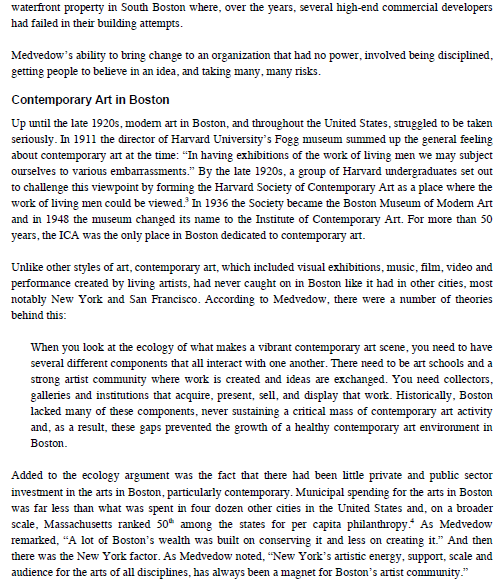
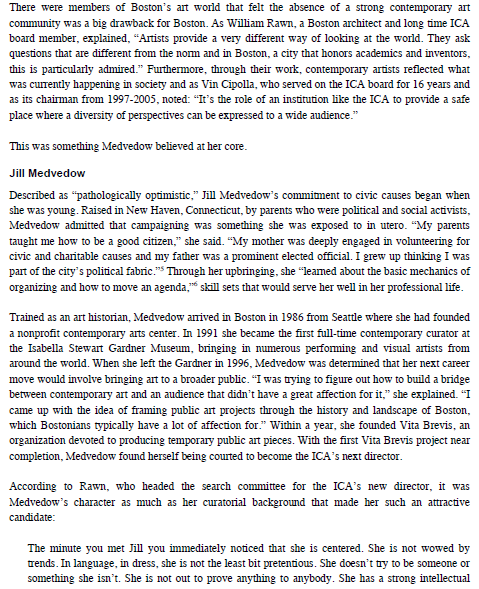
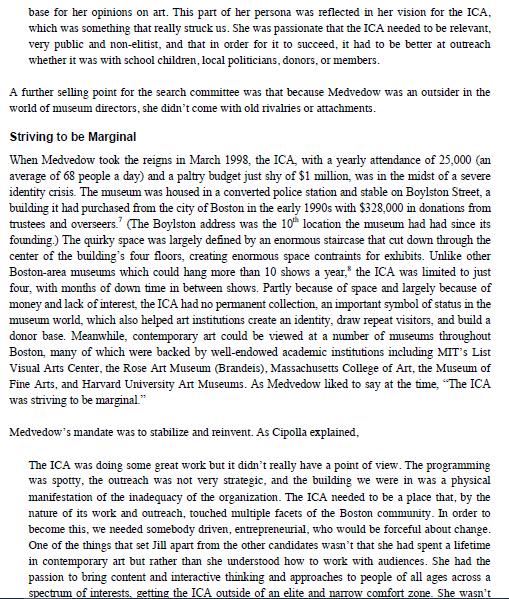
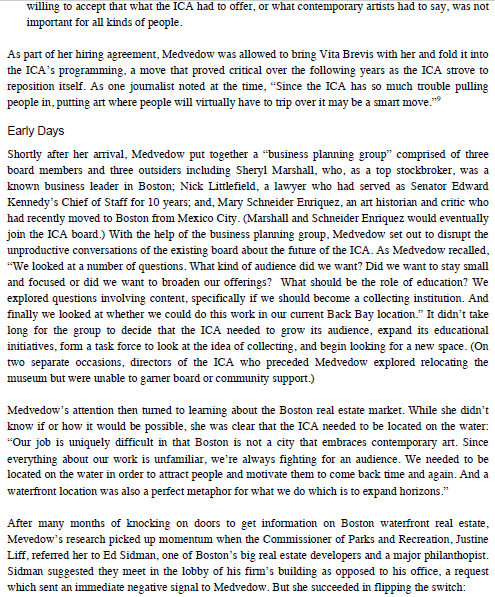
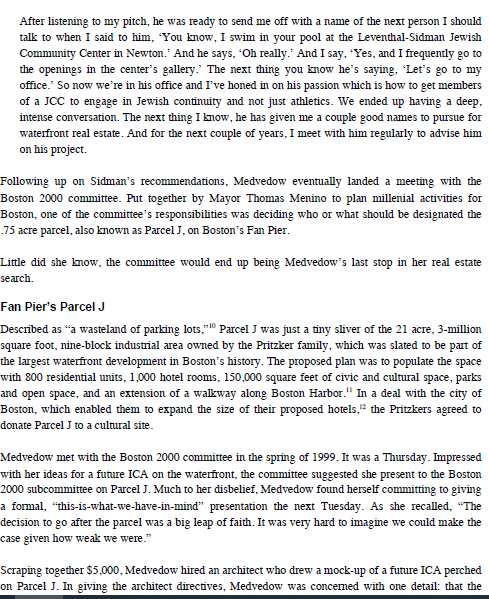

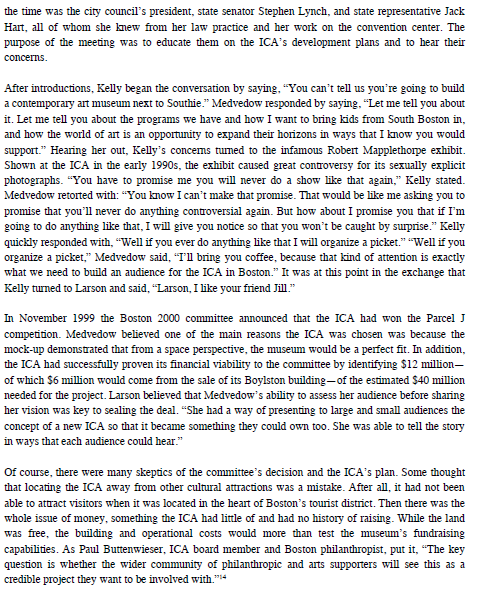
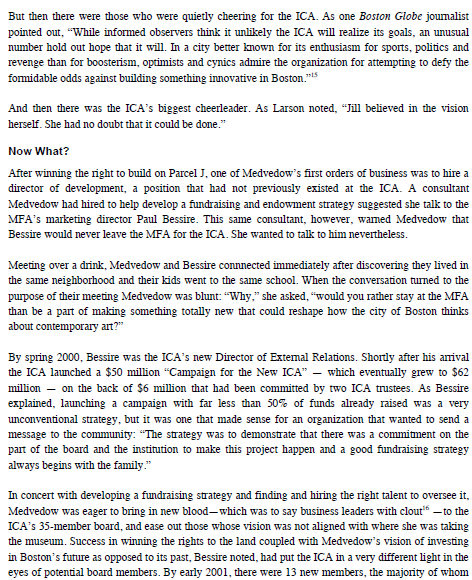
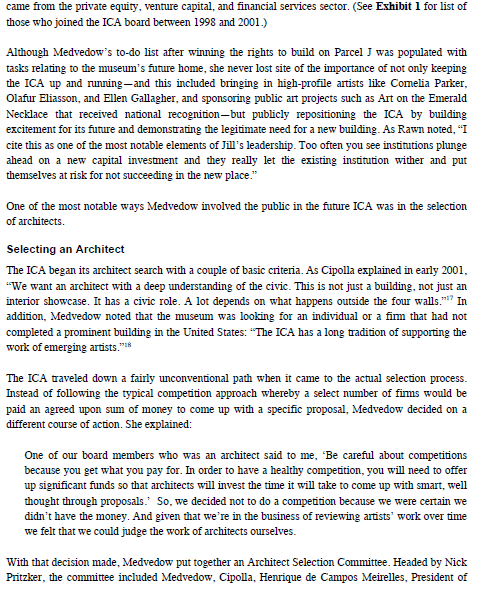
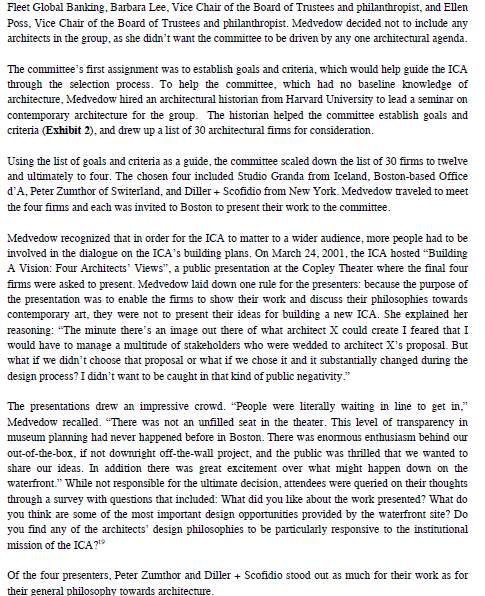
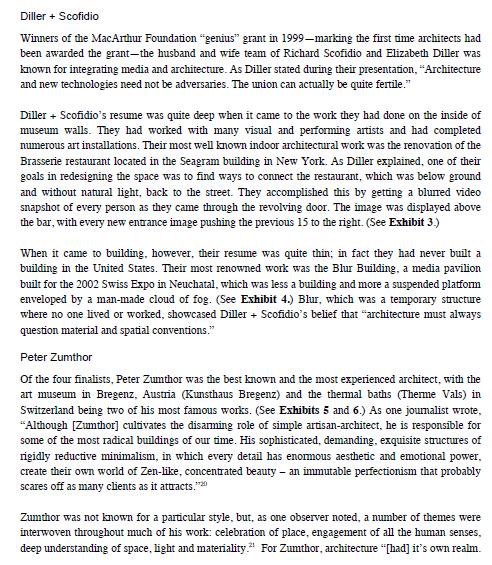
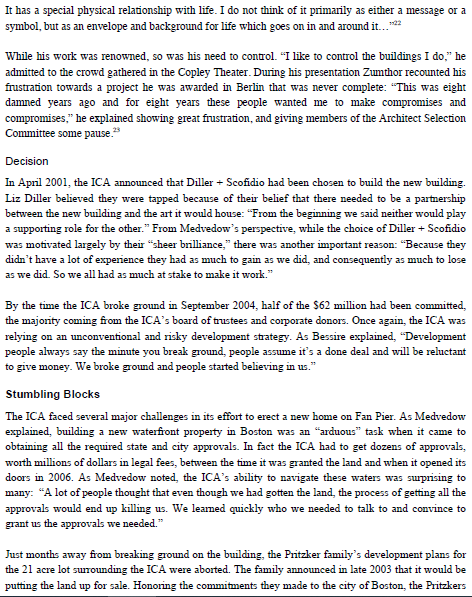
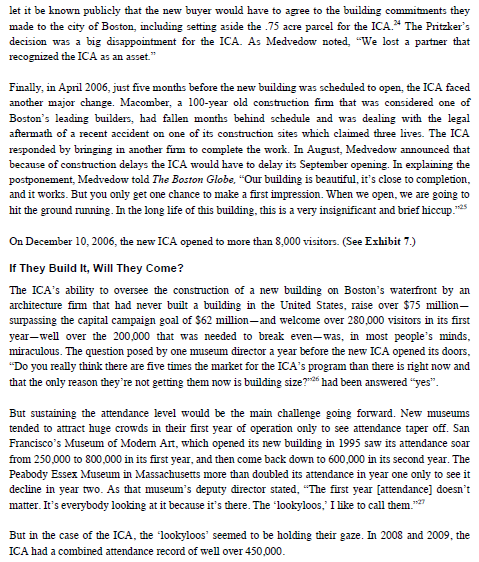
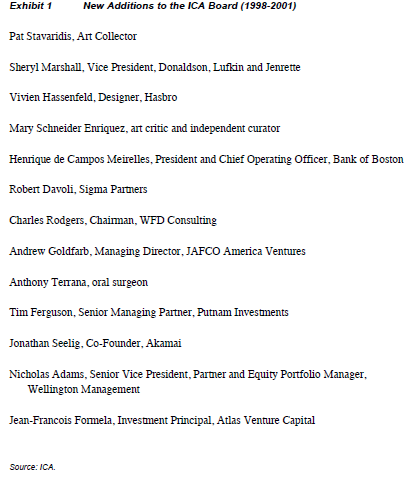
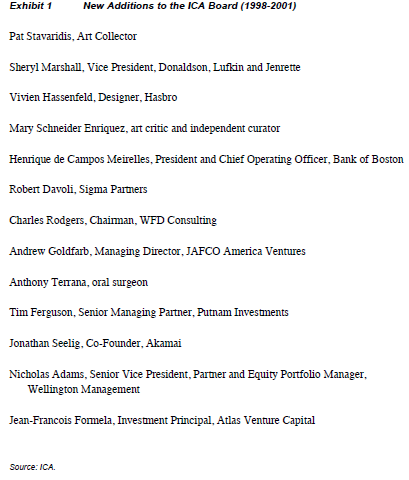
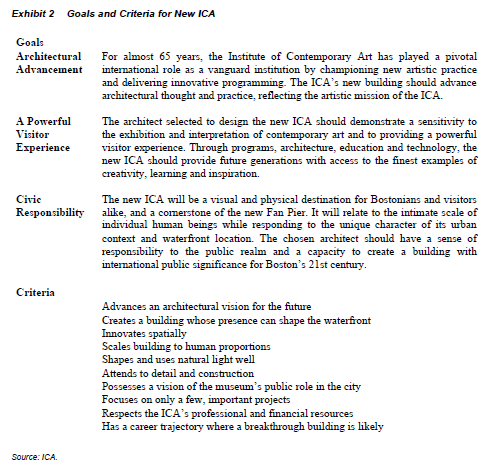
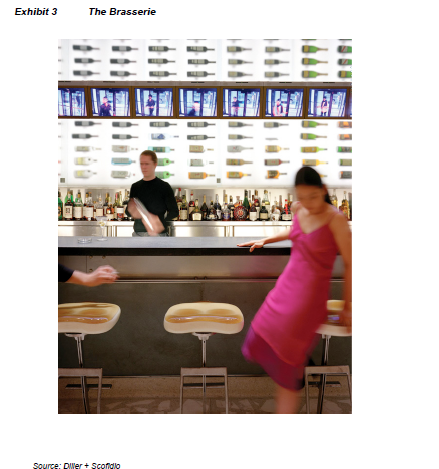
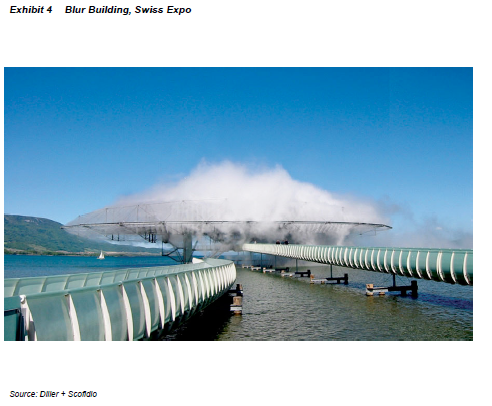
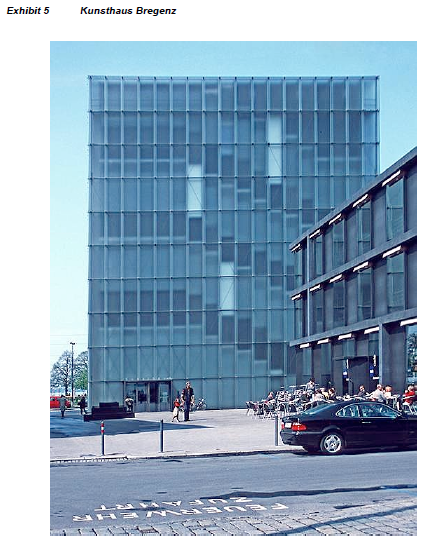
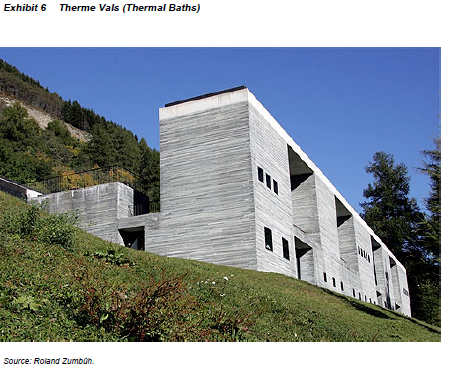
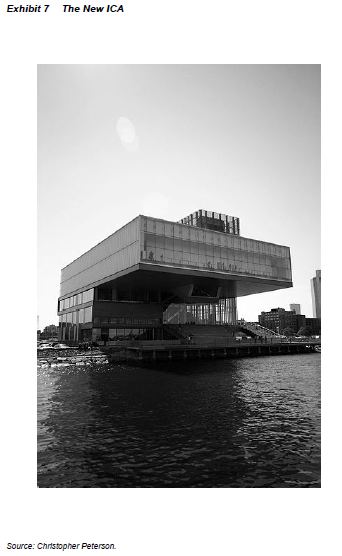
Turnaround and Transformation: Leadership and Risk at Boston's Institute of Contemporary Art Cate Reavis On February 9, 2009, Shepard Fairey, a renowned street artist known for his iconic red, white and blue, "hope", "change", and "progress" posters of Barack Obama that were used in the president's election campaign, was on his way to an opening night party for his "Supply and Demand" exhibition at Boston's Institute of Contemporary Art when he was arrested on an outstanding warrant outside the front door. Fairey had failed to appear in court three days earlier on a vandalism charge dating back to 2000 . While the arrest interrupted the opening night's festivities_and was a definite downer for the nearly 800 people who were awaiting Fairey's arrival, some of whom had purchased tickets on Craig's List for $5001 - it did nothing to dampen public enthusiasm for Fairey's exhibit. Between February and the exhibition's closing in August, 130,000 people attended the show. In some sense, the Fairey incident was great PR for the ICA, an institution that had gone through an enormous transformation under its Director, Jill Medvedow. When Medvedow arrived in 1998, the ICA had no money, few members, no permanent collection, and, on a good year, clocked 25,000 visitors. Operating out of an old police station on Boylston Street, it was hardly a must-see cultural destination in Boston. It was considered less a museum and more an "insider's art club". By the time of Fairey's exhibition, the ICA was, quite literally, in a very different place. In 2006 the had failed in their building attempts. Medvedow's ability to bring change to an organization that had no power, involved being disciplined, getting people to believe in an idea, and taking many, many risks. Contemporary Art in Boston Up until the late 1920 s, modem art in Boston, and throughout the United States, stuggled to be taken seriously. In 1911 the director of Harvard University's Fogg museum summed up the general feeling about contemporary art at the time: "In having exhibitions of the work of living men we may subject ourselves to various embarrassments." By the late 1920s, a group of Harvard undergraduates set out to challenge this viewpoint by forming the Harvard Society of Contemporary Art as a place where the work of living men could be viewed. 3 In 1936 the Society became the Boston Museum of Modern Art and in 1948 the museum changed its name to the Institute of Contemporary Art. For more than 50 years, the ICA was the only place in Boston dedicated to contemporary art. Unlike other styles of art, contemporary art, which included visual exhibitions, music, film, video and performance created by living artists, had never caught on in Boston like it had in other cities, most notably New York and San Francisco. According to Medvedow, there were a number of theories behind this: When you look at the ecology of what makes a vibrant contemporary art scene, you need to have several different components that all interact with one another. There need to be art schools and a strong artist community where work is created and ideas are exchanged. You need collectors, galleries and institutions that acquire, present, sell, and display that work. Historically, Boston lacked many of these components, never sustaining a critical mass of contemporary art activity and, as a result, these gaps prevented the growth of a healthy contemporary art environment in Boston. Added to the ecology argument was the fact that there had been little private and public sector investment in the arts in Boston, particularly contemporary. Municipal spending for the arts in Boston was far less than what was spent in four dozen other cities in the United States and, on a broader scale, Massachusetts ranked 50di among the states for per capita philanthropy. As Medvedow remarked, "A lot of Boston's wealth was built on conserving it and less on creating it." And then there was the New York factor. As Medvedow noted, "New York's artistic energy, support, scale and audience for the arts of all disciplines, has always been a magnet for Boston's artist community." There were members of Boston's art world that felt the absence of a strong contemporary art community was a big drawback for Boston. As William Rawn, a Boston architect and long time ICA board member, explained, "Artists provide a very different way of looking at the world. They ask questions that are different from the norm and in Boston, a city that honors academics and inventors, this is particularly admired." Furthermore, through their work, contemporary artists reflected what was currently happening in society and as Vin Cipolla, who served on the ICA board for 16 years and as its chairman from 1997-2005, noted: "It's the role of an institution like the ICA to provide a safe place where a diversity of perspectives can be expressed to a wide audience." This was something Medvedow believed at her core. Jill Medvedow Described as "pathologically optimistic," Jill Medvedow's commitment to civic causes began when she was young. Raised in New Haven, Connecticut, by parents who were political and social activists, Medvedow admitted that campaigning was something she was exposed to in utero. "My parents taught me how to be a good citizen," she said. "My mother was deeply engaged in volunteering for civic and charitable causes and my father was a prominent elected official. I grew up thinking I was part of the city's political fabric." Through her upbringing, she "leamed about the basic mechanics of organizing and how to move an agenda, ,16 skill sets that would serve her well in her professional life. Trained as an art historian, Medvedow anrived in Boston in 1986 from Seattle where she had founded a nonprofit contemporary arts center. In 1991 she became the first full-time contemporary curator at the Isabella Stewart Gardner Museum, bringing in numerous performing and visual artists from around the world. When she left the Gardner in 1996, Medvedow was determined that her next career move would involve bringing art to a broader public. "I was tying to figure out how to build a bridge between contemporary art and an audience that didn't have a great affection for it," she explained. "I came up with the idea of framing public art projects through the history and landscape of Boston, which Bostonians typically have a lot of affection for." Within a year, she founded Vita Brevis, an organization devoted to producing temporary public art pieces. With the first Vita Brevis project near completion, Medvedow found herself being courted to become the ICA's next director. According to Rawn, who headed the search committee for the ICA's new director, it was Medvedow's character as much as her curatorial background that made her such an attractive candidate: The minute you met Jill you immediately noticed that she is centered. She is not wowed by trends. In language, in dress, she is not the least bit pretentious. She doesn't ty to be someone or something she isn't. She is not out to prove anything to anybody. She has a strong intellectual base for her opinions on art. This part of her persona was reflected in her vision for the ICA, which was something that really struck us. She was passionate that the ICA needed to be relevant, very public and non-elitist, and that in order for it to succeed, it had to be better at outreach whether it was with school children, local politicians, donors, or members. A further selling point for the search committee was that because Medvedow was an outsider in the world of museum directors, she didn't come with old rivalries or attachments. Striving to be Marginal When Medvedow took the reigns in March 1998, the ICA, with a yearly attendance of 25,000 (an average of 68 people a day) and a paltry budget just shy of $1 million, was in the midst of a severe identity crisis. The museum was housed in a converted police station and stable on Boylston Street, a building it had purchased from the city of Boston in the early 1990 s with $328,000 in donations from trustees and overseers. 7 (The Boylston address was the 10th location the museum had had since its founding.) The quirky space was largely defined by an enormous staircase that cut down through the center of the building's four floors, creating enormous space contraints for exhibits. Unlike other Boston-area museums which could hang more than 10 shows a year, 8 the ICA was limited to just four, with months of down time in between shows. Partly because of space and largely because of money and lack of interest, the ICA had no permanent collection, an important symbol of status in the museum world, which also helped art institutions create an identity, draw repeat visitors, and build a donor base. Meanwhile, contemporary art could be viewed at a number of museums throughout Boston, many of which were backed by well-endowed academic institutions including MIT's List Visual Arts Center, the Rose Art Museum (Brandeis), Massachusetts College of Art, the Museum of Fine Arts, and Harvard University Art Museums. As Medvedow liked to say at the time, "The ICA was striving to be marginal." Medvedow's mandate was to stabilize and reinvent. As Cipolla explained, The ICA was doing some great work but it didn't really have a point of view. The programming was spotty, the outreach was not very strategic, and the building we were in was a physical manifestation of the inadequacy of the organization. The ICA needed to be a place that, by the nature of its work and outreach, touched multiple facets of the Boston community. In order to become this, we needed somebody driven, entrepreneurial, who would be forceful about change. One of the things that set Jill apart from the other candidates wasn't that she had spent a lifetime in contemporary art but rather than she understood how to work with audiences. She had the passion to bring content and interactive thinking and approaches to people of all ages across a spectrum of interests, getting the ICA outside of an elite and narrow comfort zone. She wasn't willing to accept that what the ICA had to offer, or what contemporary artists had to say, was not important for all kinds of people. As part of her hiring agreement, Medvedow was allowed to bring Vita Brevis with her and fold it into the ICA's programming, a move that proved critical over the following years as the ICA strove to reposition itself. As one joumalist noted at the time, "Since the ICA has so much trouble pulling people in, putting art where people will virtually have to trip over it may be a smart move." Early Days Shortly after her arrival, Medvedow put together a "business planning group" comprised of three board members and three outsiders including Sheryl Marshall, who, as a top stockbroker, was a known business leader in Boston; Nick Littlefield, a lawyer who had served as Senator Edward Kennedy's Chief of Staff for 10 years; and, Mary Schneider Enriquez, an art historian and critic who had recently moved to Boston from Mexico City. (Marshall and Schneider Enriquez would eventually join the ICA board.) With the help of the business planning group, Medvedow set out to disrupt the unproductive conversations of the existing board about the future of the ICA. As Medvedow recalled, "We looked at a number of questions. What kind of audience did we want? Did we want to stay small and focused or did we want to broaden our offerings? What should be the role of education? We explored questions involving content, specifically if we should become a collecting institution. And finally we looked at whether we could do this work in our current Back Bay location." It didn't take long for the group to decide that the ICA needed to grow its audience, expand its educational initiatives, form a task force to look at the idea of collecting, and begin looking for a new space. (On two separate occasions, directors of the ICA who preceded Medvedow explored relocating the museum but were unable to garner board or community support.) Medvedow's attention then tumed to learning about the Boston real estate market. While she didn't know if or how it would be possible, she was clear that the ICA needed to be located on the water: "Our job is uniquely difficult in that Boston is not a city that embraces contemporary art. Since everything about our work is unfamiliar, we're always fighting for an audience. We needed to be located on the water in order to attract people and motivate them to come back time and again. And a waterfront location was also a perfect metaphor for what we do which is to expand horizons." After many months of knocking on doors to get information on Boston waterfront real estate, Mevedow's research picked up momentum when the Commissioner of Parks and Recreation, Justine Liff, referred her to Ed Sidman, one of Boston's big real estate developers and a major philanthopist. Sidman suggested they meet in the lobby of his firm's building as opposed to his office, a request which sent an immediate negative signal to Medvedow. But she succeeded in flipping the switch: After listening to my pitch, he was ready to send me off with a name of the next person I should talk to when I said to him, 'You know, I swim in your pool at the Leventhal-Sidman Jewish Community Center in Newton.' And he says, 'Oh really.' And I say, 'Yes, and I frequently go to the openings in the center's gallery.' The next thing you know he's saying, 'Let's go to my office.' So now we're in his office and I've honed in on his passion which is how to get members of a JCC to engage in Jewish continuity and not just athletics. We ended up having a deep, intense conversation. The next thing I know, he has given me a couple good names to pursue for waterfront real estate. And for the next couple of years, I meet with him regularly to advise him on his project. Following up on Sidman's recommendations, Medvedow eventually landed a meeting with the Boston 2000 committee. Put together by Mayor Thomas Menino to plan millenial activities for Boston, one of the committee's responsibilities was deciding who or what should be designated the .75 acre parcel, also known as Parcel J, on Boston's Fan Pier. Little did she know, the committee would end up being Medvedow's last stop in her real estate search. Fan Pier's Parcel J Described as "a wasteland of parking lots," Parcel J was just a tiny sliver of the 21 acre, 3-million square foot, nine-block industrial area owned by the Pritzker family, which was slated to be part of the largest waterfiont development in Boston's history. The proposed plan was to populate the space with 800 residential units, 1,000 hotel rooms, 150,000 square feet of civic and cultural space, parks and open space, and an extension of a walkway along Boston Harbor. "In a deal with the city of Boston, which enabled them to expand the size of their proposed hotels, 12 the Pritzkers agreed to donate Parcel J to a cultural site. Medvedow met with the Boston 2000 committee in the spring of 1999. It was a Thursday. Impressed with her ideas for a future ICA on the waterfront, the committee suggested she present to the Boston 2000 subcommittee on Parcel J. Much to her disbelief, Medvedow found herself committing to giving a formal, "this-is-what-we-have-in-mind" presentation the next Tuesday. As she recalled, "The decision to go after the parcel was a big leap of faith. It was very hard to imagine we could make the case given how weak we were." Scraping together $5,000, Medvedow hired an architect who drew a mock-up of a future ICA perched on Parcel J. In giving the architect directives, Medvedow was concerned with one detail: that the structure fit on the land that was avalable. Along with the mock-up, Medvedow and a couple ICA staff members spent the weekend before the presentation making boards of eight museums - ranging in size and cost from the Milwaukee Art Museum to Minneapolis' Weisman Art Museum to the Getty in Los Angeles - that had been built in different cities since the early 1990s. Their idea was to stress the point that these museums had catapulted civic life and economic development in their respective cities and had played an important role in urban rebirth. Medvedow arrived on the designated Tuesday to present and found to her surprise that the ICA was one of three finalists who were presenting. One of the other finalists, a collaboration involving the Wang Center, Boston Ballet and Boston Lyric Opera, proposed a three-stage complex, described as a cross between Sydney's Opera House and New York's Lincoln Center. The $100 million complex would include a 2,400-seat opera and ballet house, a 500-700-seat playhouse, and a floating stage that could accommodate an audience of 1,000 . Due to its size, the complex was expected to exceed the allotted space and would require some additional land that had been set aside by the Pritzkers for an office tower. The other finalist was a relatively unknown Boston-area entrepreneur who wanted to develop a $40 million Fan Pier Performing Arts and Film Center that would include a 700-seat recital hall and 125 -seat partially open-air theater. In her pitch, Medvedow stressed that the new ICA would be "a public destination and the architectural heartbeat of the city." Funded by a $40 million capital campaign, the four-story building would occupy 60,000 square feet and would include a 400 -seat theater, and a roof sculpture garden. It would hold up to 2,000 visitors. Medvedow left the presentation thinking that the museum had a slim shot, at best, of winning Parcel J, but she was increasingly convinced that the waterfront was the right location for a new ICA. The committee's final decision would be announced in November. Drumming up Support In the intervening six months, Medvedow got busy educating the public, particularly local politicians, residents and area artists, on the ICA's plans for a new home on Fan Pier. To help her sell the idea, Medvedow approached Gloria Larson, who at the time was a partner at one of Boston's premier law firms who specialized in real estate development and govemment. At the time, Larson was chairman of the board of the Convention Center Authority and was in the middle of her own campaign to get a new convention center built in South Boston. As Larson explained, "I joined the ICA 'campaign' as both a lawyer and an advocate. I felt like Jill and I were taveling down the same path together." In planning the campaign's strategy, Larson recalled: 'We asked ourselves, 'Who do we need to touch who normally won't get touched in a process like this? Who would normally never support building an ICA on South Boston's waterfront?" After a bit of reflection, Larson decided to visit a couple of South Boston's key political leaders. Larson took Medvedow to meet James Kelly, who at the time was the city council's president, state senator Stephen Lynch, and state representative Jack Hart, all of whom she knew from her law practice and her work on the convention center. The purpose of the meeting was to educate them on the ICA's development plans and to hear their concerns. After introductions, Kelly began the conversation by saying, "You can't tell us you're going to build a contemporary art museum next to Southie." Medvedow responded by saying, "Let me tell you about it. Let me tell you about the programs we have and how I want to bring kids from South Boston in, and how the world of art is an opportunity to expand their horizons in ways that I know you would support." Hearing her out, Kelly's concems tumed to the infamous Robert Mapplethorpe exhibit. Shown at the ICA in the early 1990 s, the exhibit caused great controversy for its sexually explicit photographs. "You have to promise me you will never do a show like that again," Kelly stated. Medvedow retorted with: "You know I can't make that promise. That would be like me asking you to promise that you'll never do anything controversial again. But how about I promise you that if I'm going to do anything like that, I will give you notice so that you won't be caught by surprise." Kelly quickly responded with, "Well if you ever do anything like that I will organize a picket." "Well if you organize a picket," Medvedow said, "I'll bring you coffee, because that kind of attention is exactly what we need to build an audience for the ICA in Boston." It was at this point in the exchange that Kelly turned to Larson and said, "Larson, I like your friend Jill." In November 1999 the Boston 2000 committee announced that the ICA had won the Parcel J competition. Medvedow believed one of the main reasons the ICA was chosen was because the mock-up demonstrated that from a space perspective, the museum would be a perfect fit. In addition, the ICA had successfully proven its financial viability to the committee by identifying $12 millionof which $6 million would come from the sale of its Boylston building-of the estimated $40 million needed for the project. Larson believed that Medvedow's ability to assess her audience before sharing her vision was key to sealing the deal. "She had a way of presenting to large and small audiences the concept of a new ICA so that it became something they could own too. She was able to tell the story in ways that each audience could hear." Of course, there were many skeptics of the committee's decision and the ICA's plan. Some thought that locating the ICA away from other cultural attractions was a mistake. After all, it had not been able to attract visitors when it was located in the heart of Boston's tourist district. Then there was the whole issue of money, something the ICA had little of and had no history of raising. While the land was free, the building and operational costs would more than test the museum's fundraising capabilities. As Paul Buttenwieser, ICA board member and Boston philanthropist, put it, "The key question is whether the wider community of philanthropic and arts supporters will see this as a credible project they want to be involved with."14 But then there were those who were quietly cheering for the ICA. As one Boston Globe journalist pointed out, "While informed observers think it unlikely the ICA will realize its goals, an unusual number hold out hope that it will. In a city better known for its enthusiasm for sports, politics and revenge than for boosterism, optimists and cynics admire the organization for attempting to defy the formidable odds against building something innovative in Boston.".15 And then there was the ICA's biggest cheerleader. As Larson noted, "Jill believed in the vision herself. She had no doubt that it could be done." Now What? After winning the right to build on Parcel J, one of Medvedow's first orders of business was to hire a director of development, a position that had not previously existed at the ICA. A consultant Medvedow had hired to help develop a fundraising and endowment strategy suggested she talk to the MFA's marketing director Paul Bessire. This same consultant, however, wamed Medvedow that Bessire would never leave the MFA for the ICA. She wanted to talk to him nevertheless. Meeting over a drink, Medvedow and Bessire connnected immediately after discovering they lived in the same neighborhood and their kids went to the same school. When the conversation turned to the purpose of their meeting Medvedow was blunt: "Why," she asked, "would you rather stay at the MFA than be a part of making something totally new that could reshape how the city of Boston thinks about contemporary art?" By spring 2000 , Bessire was the ICA's new Director of Extemal Relations. Shortly after his anival the ICA launched a $50 million "Campaign for the New ICA" - which eventually grew to $62 million - on the back of $6 million that had been committed by two ICA trustees. As Bessire explained, launching a campaign with far less than 50% of funds already raised was a very unconventional strategy, but it was one that made sense for an organization that wanted to send a message to the community: "The strategy was to demonstrate that there was a commitment on the part of the board and the institution to make this project happen and a good fundraising strategy always begins with the family." In concert with developing a fundraising strategy and finding and hiring the right talent to oversee it, Medvedow was eager to bring in new blood-which was to say business leaders with clout 16 - to the ICA's 35 -member board, and ease out those whose vision was not aligned with where she was taking the museum. Success in winning the rights to the land coupled with Medvedow's vision of investing in Boston's future as opposed to its past, Bessire noted, had put the ICA in a very different light in the eyes of potential board members. By early 2001 , there were 13 new members, the majority of whom came from the private equity, venture capital, and financial services sector. (See Exhibit 1 for list of those who joined the ICA board between 1998 and 2001.) Although Medvedow's to-do list after winning the rights to build on Parcel J was populated with tasks relating to the museum's future home, she never lost site of the importance of not only keeping the ICA up and running-and this included bringing in high-profile artists like Comelia Parker, Olafur Eliasson, and Ellen Gallagher, and sponsoring public art projects such as Art on the Emerald Necklace that received national recognition-but publicly repositioning the ICA by building excitement for its future and demonstrating the legitimate need for a new building. As Rawn noted, "I cite this as one of the most notable elements of Jill's leadership. Too often you see institutions plunge ahead on a new capital investment and they really let the existing institution wither and put themselves at risk for not succeeding in the new place." One of the most notable ways Medvedow involved the public in the future ICA was in the selection of architects. Selecting an Architect The ICA began its architect search with a couple of basic criteria. As Cipolla explained in early 2001, "We want an architect with a deep understanding of the civic. This is not just a building, not just an addition, Medvedow noted that the museum was looking for an individual or a fim that had not completed a prominent building in the United States: "The ICA has a long tradition of supporting the work of emerging artists."18 The ICA traveled down a fairly unconventional path when it came to the actual selection process. Instead of following the typical competition approach whereby a select number of firms would be paid an agreed upon sum of money to come up with a specific proposal, Medvedow decided on a different course of action. She explained: One of our board members who was an architect said to me, 'Be careful about competitions because you get what you pay for. In order to have a healthy competition, you will need to offer up significant funds so that architects will invest the time it will take to come up with smart, well thought through proposals.' So, we decided not to do a competition because we were certain we didn't have the money. And given that we're in the business of reviewing artists' work over time we felt that we could judge the work of architects ourselves. With that decision made, Medvedow put together an Architect Selection Committee. Headed by Nick Pritzker, the committee included Medvedow, Cipolla, Herrique de Campos Meirelles, President of Fleet Global Banking, Barbara Lee, Vice Chair of the Board of Trustees and philanthropist, and Ellen Poss, Vice Chair of the Board of Trustees and philanthropist. Medvedow decided not to include any architects in the group, as she didn't want the committee to be driven by any one architectural agenda. The committee's first assignment was to establish goals and criteria, which would help guide the ICA through the selection process. To help the committee, which had no baseline knowledge of architecture, Medvedow hired an architectural historian from Harvard University to lead a seminar on contemporary architecture for the group. The historian helped the committee establish goals and criteria (Exhibit 2), and drew up a list of 30 architectural firms for consideration. Using the list of goals and criteria as a guide, the committee scaled down the list of 30 firms to twelve and ultimately to four. The chosen four included Studio Granda from Iceland, Boston-based Office d'A, Peter Zumthor of Switerland, and Diller + Scofidio from New York. Medvedow traveled to meet the four fims and each was invited to Boston to present their work to the committee. Medvedow recognized that in order for the ICA to matter to a wider audience, more people had to be involved in the dialogue on the ICA's building plans. On March 24, 2001, the ICA hosted "Building A Vision: Four Architects' Views", a public presentation at the Copley Theater where the final four firms were asked to present. Medvedow laid down one rule for the presenters: because the purpose of the presentation was to enable the firms to show their work and discuss their philosophies towards contemporary art, they were not to present their ideas for building a new ICA. She explained her reasoning: "The minute there's an image out there of what architect X could create I feared that I would have to manage a multitude of stakeholders who were wedded to architect X 's proposal. But what if we didn't choose that proposal or what if we chose it and it substantially changed during the design process? I didn't want to be caught in that kind of public negativity." The presentations drew an impressive crowd. "People were literally waiting in line to get in," Medvedow recalled. "There was not an unfilled seat in the theater. This level of transparency in museum planuing had never happened before in Boston. There was enormous enthusiasm behind our out-of-the-box, if not downight off-the-wall project, and the public was thrilled that we wanted to share our ideas. In addition there was great excitement over what might happen down on the waterfront." While not responsible for the ultimate decision, attendees were queried on their thoughts through a survey with questions that included: What did you like about the work presented? What do you think are some of the most important design opportunities provided by the waterfront site? Do you find any of the architects' design philosophies to be particularly responsive to the institutional mission of the ICA? ? ? 18 Of the four presenters, Peter Zumthor and Diller + Scofidio stood out as much for their work as for their general philosophy towards architecture. Winners of the MacArthur Foundation "genius" grant in 1999 -marking the first time architects had been awarded the grant-the husband and wife team of Richard Scofidio and Elizabeth Diller was known for integrating media and architecture. As Diller stated during their presentation, "Architecture and new technologies need not be adversaries. The union can actually be quite fertile." Diller + Scofidio's resume was quite deep when it came to the work they had done on the inside of museum walls. They had worked with many visual and performing artists and had completed numerous art installations. Their most well known indoor architectural work was the renovation of the Brasserie restaurant located in the Seagram building in New York. As Diller explained, one of their goals in redesigning the space was to find ways to connect the restaurant, which was below ground and without natural light, back to the street. They accomplished this by getting a blunred video snapshot of every person as they came through the revolving door. The image was displayed above the bar, with every new entrance image pushing the previous 15 to the right. (See Exhibit 3.) When it came to building, however, their resume was quite thin; in fact they had never built a building in the United States. Their most renowned work was the Blur Building, a media pavilion built for the 2002 Swiss Expo in Neuchatal, which was less a building and more a suspended platform enveloped by a man-made cloud of fog. (See Exhibit 4.) Blur, which was a temporary structure where no one lived or worked, showcased Diller + Scofidio's belief that "architecture must always question material and spatial conventions." Peter Zumthor Of the four finalists, Peter Zumthor was the best known and the most experienced architect, with the art museum in Bregenz, Austria (Kunsthaus Bregenz) and the thermal baths (Therme Vals) in Switzerland being two of his most famous works. (See Exhibits 5 and 6.) As one joumalist wrote, "Although [Zumthor] cultivates the disarming role of simple artisan-architect, he is responsible for some of the most radical buildings of our time. His sophisticated, demanding, exquisite structures of rigidly reductive minimalism, in which every detail has enormous aesthetic and emotional power, create their own world of Zen-like, concentrated beauty - an immutable perfectionism that probably scares off as many clients as it atracts." "20 Zumthor was not known for a particular style, but, as one observer noted, a number of themes were interwoven throughout much of his work: celebration of place, engagement of all the human senses, deep understanding of space, light and materiality." 21 For Zumthor, architecture "[had] it's own realm. It has a special physical relationship with life. I do not think of it primarily as either a message or a symbol, but as an envelope and background for life which goes on in and around it..."22 While his work was renowned, so was his need to control. "I like to control the buildings I do," he admitted to the crowd gathered in the Copley Theater. During his presentation Zumthor recounted his frustration towards a project he was awarded in Berlin that was never complete: "This was eight damned years ago and for eight years these people wanted me to make compromises and compromises," he explained showing great frustration, and giving members of the Architect Selection Committee some pause. 23 Decision In April 2001, the ICA announced that Diller + Scofidio had been chosen to build the new building. Liz Diller believed they were tapped because of their belief that there needed to be a partnership between the new building and the art it would house: "From the beginning we said neither would play a supporting role for the other." From Medvedow's perspective, while the choice of Diller + Scofidio was motivated largely by their "sheer brilliance," there was another important reason: "Because they didn't have a lot of experience they had as much to gain as we did, and consequently as much to lose as we did. So we all had as much at stake to make it work." By the time the ICA broke ground in September 2004, half of the $62 million had been committed, the majonity coming from the ICA's board of trustees and corporate donors. Once again, the ICA was relying on an unconventional and risky development strategy. As Bessire explained, "Development people always say the minute you break ground, people assume it's a done deal and will be reluctant to give money. We broke ground and people started believing in us." Stumbling Blocks The ICA faced several major challenges in its effort to erect a new home on Fan Pier. As Medvedow explained, building a new waterfront property in Boston was an "arduous" task when it came to obtaining all the required state and city approvals. In fact the ICA had to get dozens of approvals, worth millions of dollars in legal fees, between the time it was granted the land and when it opened its doors in 2006. As Medvedow noted, the ICA's ability to navigate these waters was surprising to many: "A lot of people thought that even though we had gotten the land, the process of getting all the approvals would end up killing us. We learned quickly who we needed to talk to and convince to grant us the approvals we needed." Just months away from breaking ground on the building, the Pritzker family's development plans for the 21 acre lot surrounding the ICA were aborted. The family announced in late 2003 that it would be putting the land up for sale. Honoring the commitments they made to the city of Boston, the Pritzkers let it be known publicly that the new buyer would have to agree to the building commitments they made to the city of Boston, including setting aside the .75 acre parcel for the ICA. 24 The Pritzker's decision was a big disappointment for the ICA. As Medvedow noted, "We lost a partner that recognized the ICA as an asset." Finally, in April 2006, just five months before the new building was scheduled to open, the ICA faced another major change. Macomber, a 100-year old construction firm that was considered one of Boston's leading builders, had fallen months behind schedule and was dealing with the legal aftermath of a recent accident on one of its construction sites which claimed three lives. The ICA responded by bringing in another fim to complete the work. In August, Medvedow announced that because of construction delays the ICA would have to delay its September opening. In explaining the postponement, Medvedow told The Boston Globe, "Our building is beautiful, it's close to completion, and it works. But you only get one chance to make a first impression. When we open, we are going to hit the ground running. In the long life of this building, this is a very insignificant and brief hiccup.",2s On December 10, 2006, the new ICA opened to more than 8,000 visitors. (See Exhibit 7.) If They Build It, Will They Come? The ICA's ability to oversee the construction of a new building on Boston's waterfront by an architecture firm that had never built a building in the United States, raise over $75 millionsurpassing the capital campaign goal of $62 million-and welcome over 280,000 visitors in its first year-well over the 200,000 that was needed to break even-was, in most people's minds, miraculous. The question posed by one museum director a year before the new ICA opened its doors, "Do you really think there are five times the market for the ICA's program than there is right now and that the only reason they're not geting them now is building size?"26 had been answered "yes". But sustaining the attendance level would be the main challenge going forward. New museums tended to attract huge crowds in their first year of operation only to see attendance taper off. San Francisco's Museum of Modem Art, which opened its new building in 1995 saw its attendance soar from 250,000 to 800,000 in its first year, and then come back down to 600,000 in its second year. The Peabody Essex Museum in Massachusetts more than doubled its attendance in year one only to see it decline in year two. As that museum's deputy director stated, "The first year [attendance] doesn't matter. It's everybody looking at it because it's there. The 'lookyloos,' I like to call them." But in the case of the ICA, the 'lookyloos' seemed to be holding their gaze. In 2008 and 2009 , the ICA had a combined attendance record of well over 450,000 . Exhibit 1 New Additions to the ICA Board (1998-2001) Pat Stavaridis, Art Collector Sheryl Marshall, Vice President, Donaldson, Lufkin and Jenrette Vivien Hassenfeld, Designer, Hasbro Mary Schneider Enriquez, art critic and independent curator Henrique de Campos Meirelles, President and Chief Operating Officer, Bank of Boston Robert Davoli, Sigma Parmers Charles Rodgers, Chaiman, WFD Consulting Andrew Goldfarb, Managing Director, JAFCO America Ventures Anthony Terrana, oral surgeon Tim Ferguson, Senior Managing Partner, Putnam Investments Jonathan Seelig, Co-Founder, Akamai Nicholas Adams, Senior Vice President, Partner and Equity Portfolio Manager, Wellington Management Jean-Francois Formela, Investment Principal, Atlas Venture Capital Source:ICA. Exhibit 1 New Additions to the ICA Board (1998-2001) Pat Stavaridis, Art Collector Sheryl Marshall, Vice President, Donaldson, Lufkin and Jenrette Vivien Hassenfeld, Designer, Hasbro Mary Schneider Enriquez, art critic and independent curator Henrique de Campos Meirelles, President and Chief Operating Officer, Bank of Boston Robert Davoli, Sigma Parmers Charles Rodgers, Chaiman, WFD Consulting Andrew Goldfarb, Managing Director, JAFCO America Ventures Anthony Terrana, oral surgeon Tim Ferguson, Senior Managing Partner, Putnam Investments Jonathan Seelig, Co-Founder, Akamai Nicholas Adams, Senior Vice President, Partner and Equity Portfolio Manager, Wellington Management Jean-Francois Formela, Investment Principal, Atlas Venture Capital Source:ICA. Exhibit 2 Goals and Criteria for New ICA Goals Architectural Advancement A Powerful Visitor Experience Civic Responsibility For almost 65 years, the Institute of Contemporary Art has played a pivotal international role as a vanguard institution by championing new artistic practice and delivering innovative programming. The ICA's new building should advance architectural thought and practice, reflecting the artistic mission of the ICA. The architect selected to design the new ICA should demonstrate a sensitivity to the exhibition and interpretation of contemporary art and to providing a powerful visitor experience. Through programs, architecture, education and technology, the new ICA should provide future generations with access to the finest examples of creativity, learning and inspiration. The new ICA will be a visual and physical destination for Bostonians and visitors alike, and a comerstone of the new Fan Pier. It will relate to the intimate scale of individual human beings while responding to the unique character of its urban context and waterfront location. The chosen architect should have a sense of responsibility to the public realm and a capacity to create a building with international public significance for Boston's 21 st century. Criteria Advances an architectural vision for the future Creates a building whose presence can shape the waterfront Innovates spatially Scales building to human proportions Shapes and uses natural light well Attends to detail and construction Possesses a vision of the museum's public role in the city Focuses on only a few, important projects Respects the ICA's professional and financial resources Has a career trajectory where a breakthrough building is likely Source-ICA. Exhibit 3 The Brasserie Source: Dwer + scondlo Exhibit 4 Blur Building, Swiss Expo Exhibit 5 Kunsthaus Bregenz Exhibit 6 Therme Vals (Thermal Baths) Source: Roland Zumban. Source: Christopher Peterson
Step by Step Solution
There are 3 Steps involved in it
Step: 1

Get Instant Access to Expert-Tailored Solutions
See step-by-step solutions with expert insights and AI powered tools for academic success
Step: 2

Step: 3

Ace Your Homework with AI
Get the answers you need in no time with our AI-driven, step-by-step assistance
Get Started


